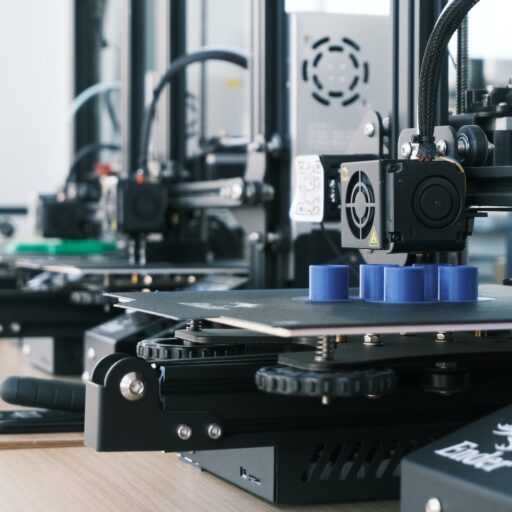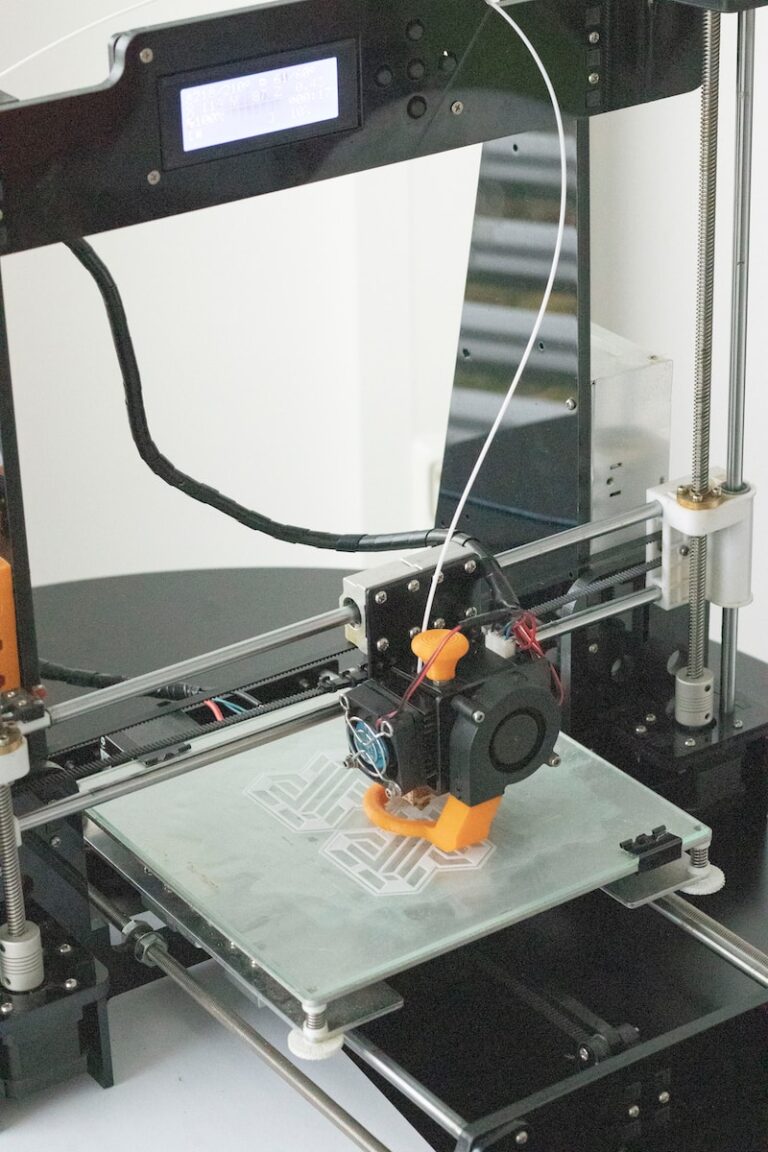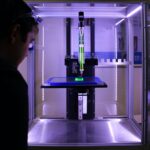Support our educational content for free when you purchase through links on our site. Learn more
How to Choose the Best 3D Printers for You? [2024]
Imagine holding in your hands an object that you’ve designed and brought to life using a 3D printer. The possibilities are endless, from creating intricate jewelry to building functional prototypes. But with so many options available, how do you choose the best 3D printer for you? At Best 3D Printer™, we’ve got you covered. Our team of 3D printer enthusiasts has put together this comprehensive guide to help you make an informed decision. So let’s dive in and find the perfect 3D printer for your needs.
Table of Contents
- Quick Answer
- Quick Tips and Facts
- Background and History
- Choosing the Right Technology
- Choosing an FFF Printer
- Choosing an SLA Printer
- Other Considerations
- FAQ
- Conclusion
- Recommended Links
- Reference Links
Quick Answer
Choosing the best 3D printer for you depends on several factors, including your budget, intended use, and level of expertise. Here are some quick tips to help you get started:
✅ Determine your budget and stick to it.
✅ Consider the size and type of objects you want to print.
✅ Research the different technologies available.
✅ Read reviews and compare features.
✅ Consider the availability of materials and support.
✅ Take into account your level of experience and technical skills.
Now that you have a quick overview, let’s dive deeper into the world of 3D printers.
Quick Tips and Facts
Before we delve into the details, here are some quick tips and interesting facts about 3D printers:
✅ 3D printing, also known as additive manufacturing, is the process of creating three-dimensional objects by layering materials on top of each other.
✅ The first 3D printer was invented in the 1980s, but it wasn’t until recent years that the technology became more accessible and affordable.
✅ There are several types of 3D printing technologies, including Fused Filament Fabrication (FFF) and Stereolithography (SLA).
✅ FFF printers are more common and affordable, while SLA printers offer higher precision and smoother finishes.
✅ 3D printers can use a variety of materials, including plastics, metals, and even food.
✅ The cost of 3D printers can range from a few hundred dollars to several thousand dollars, depending on the features and capabilities.
Now that you have a basic understanding, let’s explore the different aspects of choosing the best 3D printer for you.
Background and History

3D printing has come a long way since its inception. What was once a technology limited to industrial applications has now become accessible to individuals and small businesses. Today, 3D printers are used in various industries, including manufacturing, healthcare, and education.
When choosing a 3D printer, it’s important to consider the intended use. Are you a hobbyist looking to create small objects, or are you a professional in need of high-quality prototypes? Understanding your needs will help you narrow down your options.
Choosing the Right Technology
There are several 3D printing technologies available, each with its own strengths and weaknesses. The two most common technologies are Fused Filament Fabrication (FFF) and Stereolithography (SLA). Let’s take a closer look at each one.
Choosing an FFF Printer
FFF printers, also known as FDM (Fused Deposition Modeling) printers, are the most common and affordable type of 3D printers. They work by melting a plastic filament and extruding it layer by layer to create an object.
When choosing an FFF printer, consider the following factors:
Print Quality
FFF printers are known for their visible layer lines, but advancements in technology have improved print quality. Look for printers with a smaller nozzle diameter and the ability to print at finer layer heights for better results.
Print Speed
Print speed is influenced by various factors, including layer height, nozzle diameter, and print settings. While faster print speeds are desirable, they often come at the expense of print quality. Finding the right balance is key.
Print Volume
Consider the size of the objects you want to print. FFF printers generally offer larger print volumes compared to SLA printers, but keep in mind that larger prints may be prone to warping and require more time to complete.
Material Compatibility
Check the compatibility of the printer with different types of filaments. PLA and ABS are the most common filaments, but there are many other options available, including flexible materials, wood-infused filaments, and even metal-filled filaments.
Ease of Use
Consider your level of experience and technical skills. Some printers require more tinkering and calibration, while others offer a more user-friendly experience. Look for printers with intuitive interfaces and good customer support.
Choosing an SLA Printer
SLA printers use a different technology called Stereolithography. Instead of melting a filament, SLA printers use a liquid resin that is hardened by a UV light source layer by layer.
When choosing an SLA printer, consider the following factors:
Print Quality
SLA printers offer higher precision and smoother finishes compared to FFF printers. Look for printers with a high-resolution display and the ability to print at smaller layer heights for better detail.
Print Speed
Print speed for SLA printers is influenced by factors such as curing times and the type of display used. Some printers also incorporate a tilt mechanism to reduce printing time. Consider the speed of the printer if you have time-sensitive projects.
Print Volume
SLA printers generally offer smaller print volumes compared to FFF printers. If you plan on printing larger objects, make sure the printer can accommodate your needs.
Material Compatibility
SLA printers use liquid resin, which comes in different formulations and colors. Consider the availability and cost of the resin, as well as the compatibility with different types of resins for specific applications.
Ease of Use
SLA printers require more attention to safety and ventilation due to the use of liquid resin and UV light. Consider the space requirements and safety precautions when choosing an SLA printer.
Other Considerations
In addition to the technology, there are other factors to consider when choosing a 3D printer:
✅ Safety: 3D printers can emit fumes and heat during operation. Look for printers with built-in safety features and consider proper ventilation in your workspace.
✅ Technical Support: Check the availability of technical support and customer service. A reliable manufacturer with good customer support can make a big difference if you encounter any issues.
✅ Cost: Consider not only the upfront cost of the printer but also the ongoing costs of materials and maintenance. Cheaper printers may require more frequent maintenance and have limited material options.
✅ Connectivity: Some printers offer wireless connectivity or the ability to print remotely. Consider your workflow and whether these features are important to you.
✅ Expandability: Look for printers that offer upgrade options or the ability to add accessories. This can help future-proof your investment and allow you to expand the capabilities of your printer.
Now that you have a comprehensive understanding of the different aspects to consider when choosing a 3D printer, let’s address some frequently asked questions.
FAQ

How do I find the best 3D printer for me?
Finding the best 3D printer for you involves considering your budget, intended use, and level of expertise. Research different technologies, read reviews, and compare features to make an informed decision.
Read more about “Best 3D Printers 2024: Unleashing the Power of Innovation”
How do I choose my first 3D printer?
For beginners, it’s important to choose a printer that is easy to use and offers good customer support. Look for printers with intuitive interfaces and a supportive community to help you get started.
Read more about “Which Type of 3D Printer is Best? …”
What is a good 3D printer to start out on?
Some popular options for beginners include the Creality Ender 3, Prusa i3 MK3S, and FlashForge Creator Pro. These printers offer a good balance of affordability, ease of use, and print quality.
Read more about “Best 3D Printer for Home Business …”
What features should I look for in a 3D printer?
Key features to consider include print quality, print speed, print volume, material compatibility, ease of use, safety features, technical support, and cost. Evaluate these features based on your specific needs and priorities.
If you have any other questions, feel free to reach out to us. We’re here to help!
Read more about “Best Budget 3D Printer 2024: Unleashing Creativity on a Budget”
Conclusion

Choosing the best 3D printer for you requires careful consideration of your budget, intended use, and level of expertise. By understanding the different technologies, comparing features, and reading reviews, you can make an informed decision. Remember to consider factors such as print quality, print speed, print volume, material compatibility, ease of use, safety features, technical support, and cost. With the right 3D printer, you can bring your ideas to life and unlock a world of creativity.
Now that you have all the information you need, it’s time to start your 3D printing journey. Happy printing!
Recommended Links
- 3D Printer Reviews
- 3D Printer Brands
- 3D Printers for Small Businesses
- 3D Printing Industry News
- 3D Printers for Education
- Which Type of 3D Printer is Best? 2024



